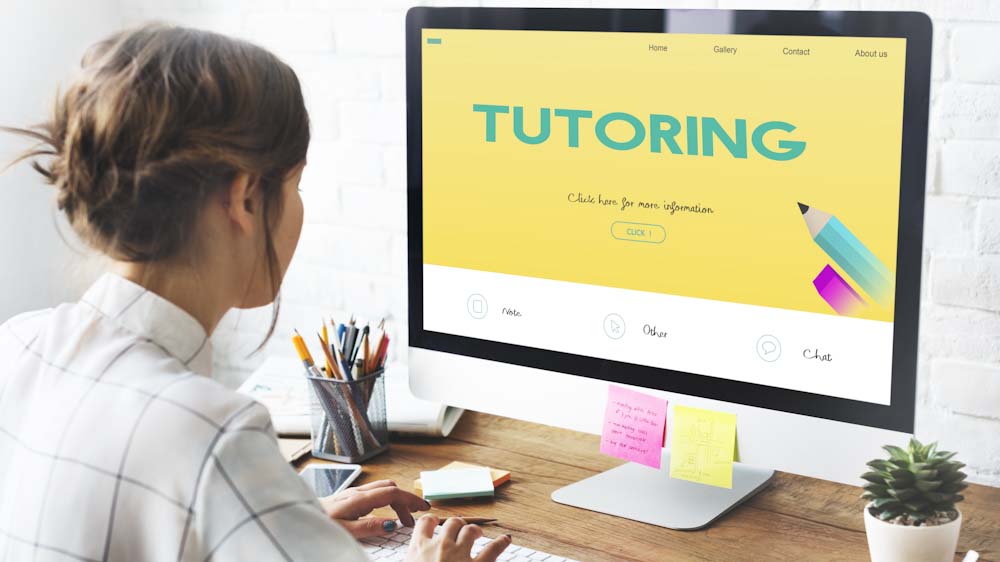Welcome to Fluentify. We’re sure that you’re as eager as we are to start filling your calendar with back-to-back classes.
We get a lot of feedback from our students about what they want from a language teacher. We have created this post to share these insights with you to help you find success on the platform.
One word before we start
No tutor has a fully-booked calendar in the first few months. Building your student list takes time. However, if you follow these best practices, achieving your session targets is very possible in time.
If you’d like some more advice after reading this post, just contact us on Slack and we’ll be there to help you.
1. PLACEMENT AND ASSESSMENT TESTS
What’s the difference between a placement and an assessment test?
The placement test is the test students take when they first join the platform to determine their level.
The assessment test is the test the students take after they have completed a block of sessions (often 48) to determine whether they have moved up a level.
Find out more about how to assess a student’s level here:
Why mastering the placement test is important for success on Fluentify platform
The placement test is often a student’s first contact with you and Fluentify platform. During the test the student decides whether they want to continue sessions with you and so it is important to use some tactics to ‘hook’ them into your method of teaching.
How to get students to book another session with you after the placement test
Not all students who do a placement test with you will come back. It’s not your fault, it’s just how it is sometimes.
The best way to get a student to book another session with you, is to finish the test after 20 minutes and start to talk about the student’s needs and how you can help them.
Next, ask the question, ‘does that sound good to you?’
If they say ‘yes,’ they are mentally opting in to your lessons and readying themselves to come back.
If you have time, you could even start practicing a language point, to give them a taster of your style. Finish the placement by giving your student some comprehension homework and tell them what you’ll be doing next class.
2. HOW TO TEACH GREAT LANGUAGE CLASSES EVERY TIME
Our veteran tutors teach classes using these three key techniques. They get great reviews and are often fully-booked weeks in advance. In time, you can achieve the same booking-rates by following these methods.
Structure:
Very few students just want to chat. Instead they want you to provide them with a learning plan to help them reach their language-learning goals. Each time a student completes a session with you, discuss what you’re going to do next. This could be suggested by the student, or better, recommended by you as part of the learning pathway you’re providing them.
Personalisation:
One of the reasons students come to Fluentify is that they’ve tried the standard English courses and they still don’t feel satisfied with their English level.
That’s why a personal student plan is essential to providing great classes, because the tutor designs it specifically for the needs of the student.
When choosing activities, it’s important to keep the student’s goals and level in mind to make sure that the subject matters are interesting, relevant, and appropriate, with increasing difficulty as the month progresses.
To provide students with tailor-made lessons you need to find out:
- Why your student is taking classes
- How they plan to use English in the future
- What your student is interested in or passionate about
- Their strengths and weaknesses with the language
A balance between conversation and language exercises
From analysing student data, we have found that the best way to teach classes is to split them into two components: 50% speaking and 50% working on a language point. (Of course, you should adjust the ratio for lower-level students who need more language instruction.)
Students really value the conversation time – chatting is a natural impulse and doesn’t feel like ‘work’. However, they also like learning new grammatical structures and vocabulary. This way they feel like they are always progressing. Relax and be yourself, your students will love speaking to you.
3. HOMEWORK
Almost all Fluentify students want and expect homework to complete between lessons. It’s part of the Fluentify service and a great way to build a loyal following of students.
Fluentify tutors usually give comprehension homework in the form of articles, podcasts and short videos.
For a list of suggested homework materials check out this post of 25 Great Homework Resource sites (recommended by tutors).
Writing homework: A little-used activity that builds a student-following
Did you know that very few tutors on Fluentify offer writing homework? Of course, it’s not obligatory, but writing homework is a real selling-point for your services and a great way to get students to come back for your class, because they’ll want to know how they did in the exercise.
4. CALENDAR
A good amount of availability on your calendar is always beneficial to finding students. However, you don’t need to be available for 16 hours a day, seven days a week to make Fluentify work for you (of course!). What students really value is CONSISTENT hours and availability as far ahead into the future as you can manage.
Everyone has a routine and so a student will naturally book a teacher who they can rely on to be available at the same time every week (except for holiday times, of course).
In addition, making yourself available weeks ahead builds trust with students and shows that you’re still going to be there in the coming months and not abandon them.
Finally, don’t forget that students buy packs of classes and many like to book these all at once. This means they may book two sessions a week with you, up to five or six weeks ahead. Try it for yourself and watch your students book sessions weeks ahead, with you, their prefered tutor.
5. FEEDBACK FORMS
Students also often stay with a tutor because they write them helpful feedback.
Don’t worry, to be successful, you don’t have to spend hours writing feedback forms.
Here are some tips for great feedback forms:
One: Open the feedback form in a separate tab before your session starts, then you can take notes while listening to your student.
Two: Copy and paste from the chat into the feedback form, to record any error-correction and new vocabulary.
Three: You can edit your feedback forms once you have submitted them. If your feedback form is ready but you’re still looking for a link to an interesting article or video, you can submit the feedback form and add the link later.
Four: Each time you write a feedback form for a particular language point, we advise you to copy and paste it into a Word document and ‘bank’ them in a file on your computer. Next time you teach the same subject you can use that feedback form again, with some modifications for that particular lesson.
Finally, don’t forget you have 48 HOURS to submit and feedback form. However, the sooner you submit, the better, as students get notified when you leave feedback and so it serves as a reminder for them to book another session with you.
There’s lots that you could and should include in your feedback forms to complete the lesson process. For more information check out How to Write Feedback that Hooks your Students.
Final thoughts
We hope that this guide has been useful. We value you as a tutor and would like to wish you lots of success on Fluentify platform.
Happy tutoring!


One thought on “5 Best practices for tutoring on Fluentify (to increase your bookings)”
Thanks for the great tips! I can’t wait to start teaching.